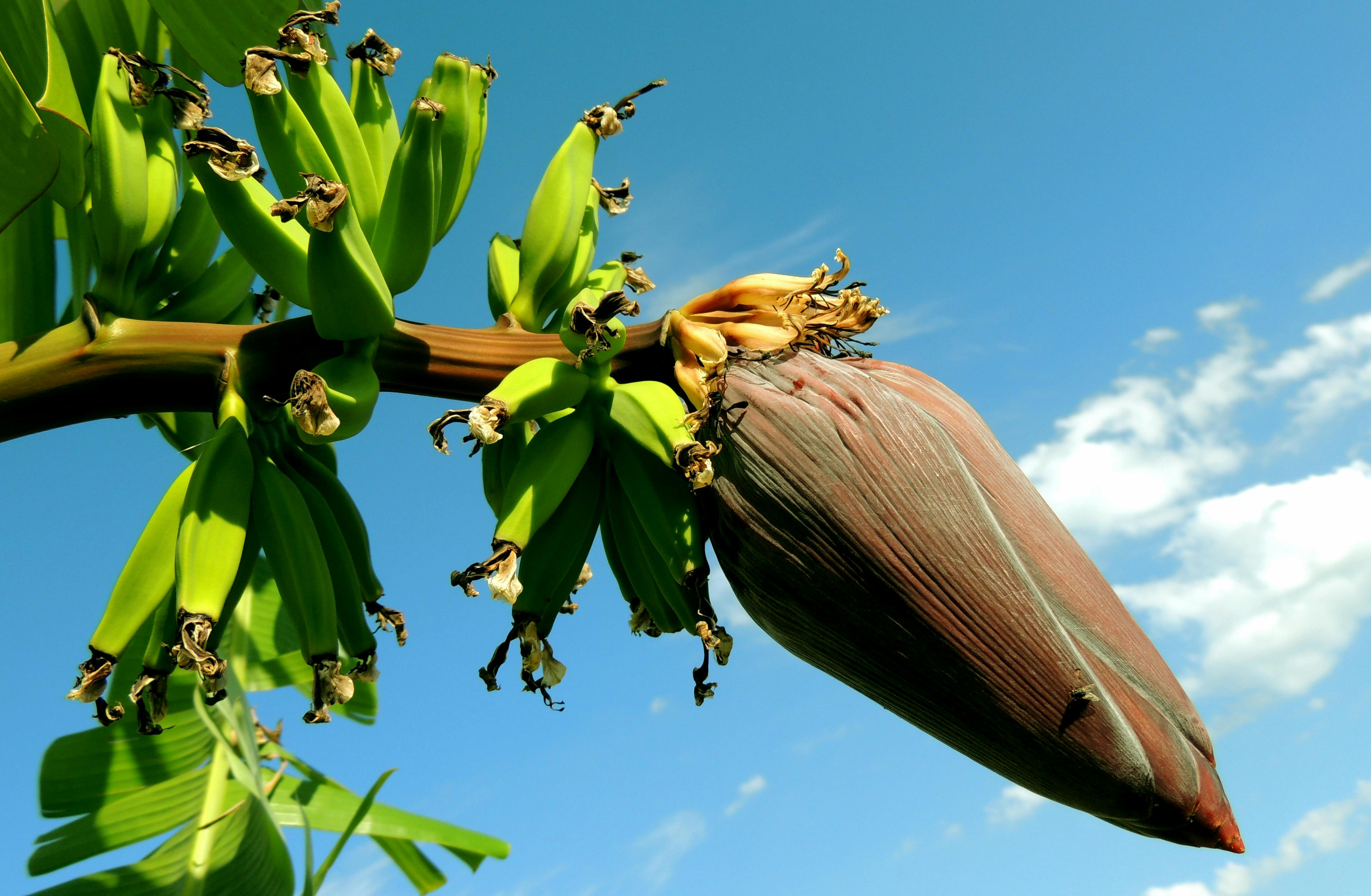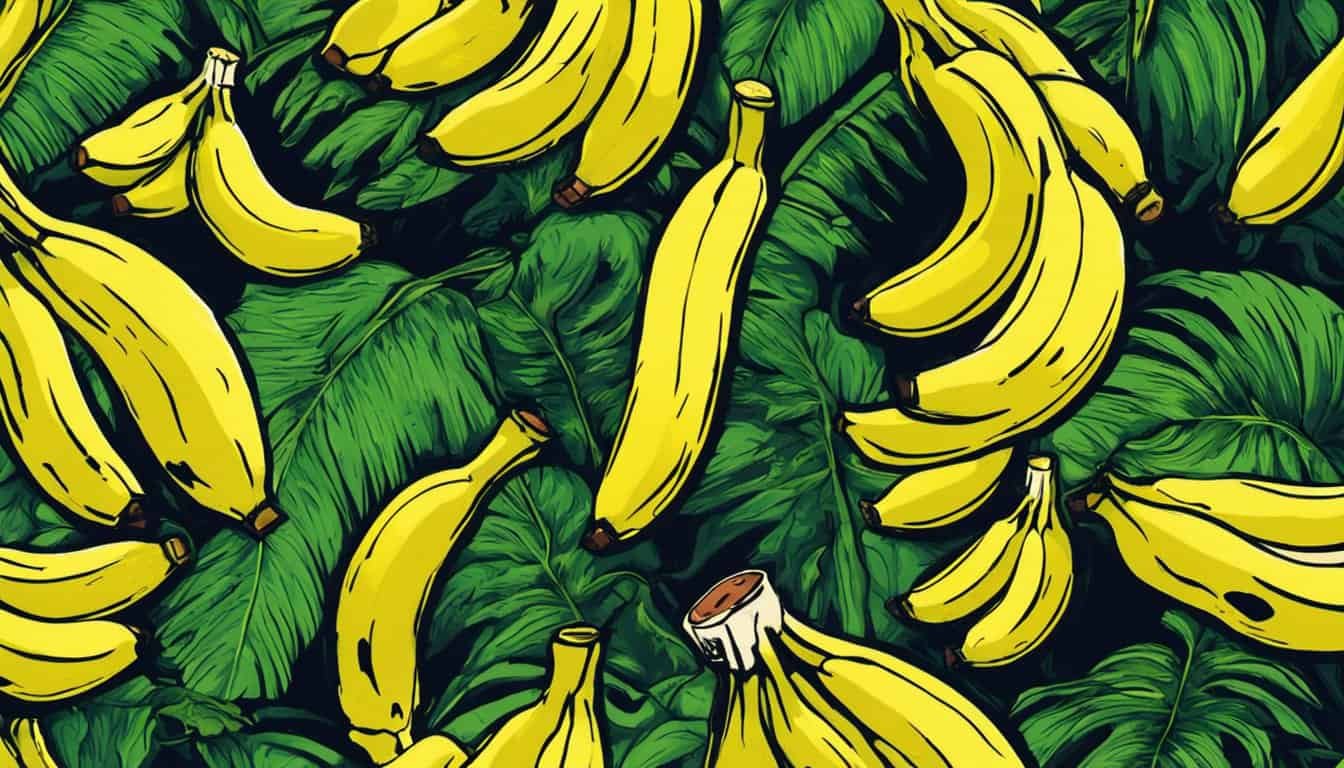Key Takeaways
- Enhances Soil Health: Utilizing composting, cover cropping, and minimal tillage to maintain and improve soil fertility and structure.
- Conserves Water Resources: Implementing drip irrigation and rainwater harvesting systems to reduce water waste and ensure efficient usage.
- Reduces Chemical Dependency: Employing Integrated Pest Management (IPM) and natural pest control methods to minimize the use of harmful chemicals.
- Promotes Biodiversity: Incorporating diverse plant species and conserving wildlife habitats to support ecosystem balance and disease resistance.
- Boosts Economic Viability: Achieving long-term savings and increased profits through sustainable practices and accessing premium markets.
- Addresses Farming Challenges: Overcoming issues like climate variability and soil degradation with resilient and sustainable farming solutions.

Sustainable banana farming has always intrigued me. There’s something inspiring about how farmers balance thriving crops with caring for the environment.
I’ve seen firsthand how eco-friendly practices can transform banana plantations. From reducing chemical use to enhancing soil health, these methods not only boost yields but also protect our planet.
In this article, I’ll dive into the key strategies that make banana farming sustainable and share why they matter for both farmers and the Earth.
Overview Of Sustainable Banana Farming

I believe sustainable banana farming balances high yields with environmental stewardship. By focusing on soil health, efficient water use, and biodiversity, I reduce chemical inputs and promote ecosystem resilience. Techniques such as organic fertilization, integrated pest management, and crop diversification increase both productivity and farm sustainability.
Key Components
- Soil Management: I use composting, cover cropping, and minimal tillage to maintain soil fertility and structure.
- Water Conservation: Implementing drip irrigation and rainwater harvesting helps me minimize water waste and ensure efficient usage.
- Pest Control: I employ natural predators, biological controls, and resistant banana varieties to manage pests without harmful chemicals.
- Biodiversity: By incorporating diverse plant species and conserving wildlife habitats, I support a balanced ecosystem and reduce disease spread.
Sustainable Practices and Benefits
| Sustainable Practice | Benefits |
|---|---|
| Organic Fertilization | Enhances soil fertility, reduces chemical runoff |
| Integrated Pest Management | Decreases reliance on pesticides, promotes natural predators |
| Drip Irrigation | Conserves water, reduces evaporation losses |
| Crop Diversification | Increases resilience to pests and diseases, improves soil health |
This approach ensures my banana farming remains productive and environmentally responsible.
Environmental Benefits
Implementing sustainable practices in banana farming significantly enhances environmental health. These methods promote ecosystem stability and resource efficiency.
Soil Health Management
Maintaining soil fertility is crucial for robust banana production. I use composting to recycle organic waste, enriching the soil with essential nutrients. Cover cropping prevents erosion and maintains soil structure. Crop rotation diversifies plant species, reducing pest buildup and promoting microbial diversity. These practices increase soil organic matter by up to 30%, improving water retention and root growth.
Water Conservation Practices
Efficient water use preserves this vital resource and supports banana tree growth. I employ drip irrigation systems that deliver water directly to the roots, minimizing evaporation and runoff. Mulching reduces soil moisture loss and regulates temperature. Rainwater harvesting collects and stores water for irrigation during dry periods. These techniques decrease water usage by approximately 40%, ensuring sustainable cultivation even in areas with limited water availability.
Sustainable Farming Techniques
I implement various techniques to ensure my banana farm remains environmentally friendly and productive.
Organic Farming Methods
I use organic farming methods to maintain soil fertility and promote healthy banana growth. Techniques include:
- Composting: I create compost from banana plant residues, kitchen scraps, and green waste, enriching the soil with essential nutrients.
- Cover Cropping: Planting cover crops like legumes and clover helps prevent soil erosion, increase organic matter, and fix nitrogen in the soil.
- Crop Rotation: Rotating banana with other compatible crops disrupts pest cycles and enhances soil structure.
- Natural Fertilizers: I use natural fertilizers such as fish emulsion and bone meal to provide balanced nutrition without synthetic chemicals.
These practices reduce chemical dependency and improve the long-term sustainability of the banana plantation.
Integrated Pest Management
I employ integrated pest management (IPM) to control pests effectively while minimizing environmental impact. Key IPM strategies include:
- Biological Control: Introducing natural predators like ladybugs and nematodes helps manage pest populations naturally.
- Chemical Controls: When necessary, I apply organic-approved pesticides to target specific pests while minimizing harm to beneficial insects.
- Cultural Practices: Implementing sanitation measures, such as removing plant debris, reduces pest habitats.
- Monitoring: Regularly inspecting plants allows me to detect and address pest issues early, maintaining plant health.
By combining these methods, I effectively manage pests and maintain the health of my banana crops.
Economic Impacts

Sustainable banana farming offers significant economic benefits while promoting environmental health. Here’s how these practices influence the financial landscape of banana farming.
Cost-Benefit Analysis
Implementing sustainable practices involves initial investments but yields long-term savings and increased profits.
- Initial Costs: Organic fertilizers cost 20% more than synthetic alternatives. However, composting reduces fertilizer expenses by 15% annually.
- Labor Expenses: Integrated pest management (IPM) requires 10% more labor initially, but it lowers pesticide costs by 25% each year.
- Yield Improvements: Sustainable soil management techniques enhance yields by 10%, boosting revenue by approximately $5,000 per hectare.
- Environmental Savings: Reducing chemical runoff minimizes potential fines and environmental remediation costs, saving up to $2,000 annually.
| Expense Category | Initial Cost Increase | Annual Savings/Revenue |
|---|---|---|
| Organic Fertilizers | +20% | -15% fertilizer costs |
| Labor for IPM | +10% | -25% pesticide costs |
| Soil Management | N/A | +10% yields ($5K/ha) |
| Environmental Compliance | N/A | + $2K annually |
Balancing these factors shows that sustainable practices can lead to a net positive economic impact over time.
Market Trends
The demand for sustainably grown bananas is steadily rising, influencing market dynamics.
- Consumer Preferences: 60% of consumers prefer organic bananas, driving higher prices and market share for sustainable farms.
- Certification Benefits: Farms with organic certifications see a 30% premium on banana prices compared to non-certified counterparts.
- Export Opportunities: Countries enforcing strict environmental standards increase export potentials by 20% for sustainably grown bananas.
- Supply Chain Integration: Retailers seek partnerships with sustainable suppliers, ensuring consistent demand and long-term contracts.
Adapting to these trends not only meets consumer demand but also positions farms advantageously in the global market.
Challenges And Solutions
Sustainable banana farming faces several challenges that require effective solutions to maintain productivity and environmental balance.

Pest and Disease Management
« The Life Cycle of a Banana Plant: From Seed to Harvest Explained
Organic Banana Production: Challenges and Benefits You Need to Know »
Managing pests and diseases is crucial for healthy banana crops. Integrated Pest Management (IPM) strategies help minimize chemical use by combining biological control, resistant varieties, and cultural practices. For instance, introducing natural predators like ladybugs can reduce pest populations without harming the ecosystem.
Climate Change and Weather Variability
Climate change leads to unpredictable weather patterns, affecting banana yields. Adopting climate-resilient practices, such as using shade trees and improving soil moisture retention, enhances the farm’s ability to withstand extreme weather events. Implementing drip irrigation systems also conserves water during droughts.
Soil Degradation
Soil health is vital for banana growth. Continuous cropping can lead to nutrient depletion and erosion. Practices like crop rotation, cover cropping, and adding organic matter through composting replenish soil nutrients and improve its structure. These methods maintain fertility and prevent degradation over time.
Labor Shortages
Finding and retaining skilled laborers is a common issue in banana farming. Providing fair wages, training programs, and safe working conditions can improve labor satisfaction and retention. Additionally, adopting labor-saving technologies can reduce dependence on manual labor while maintaining efficiency.
Market Fluctuations
Banana prices can be volatile, impacting farm profitability. Diversifying crops and developing value-added products, such as banana-based snacks or fermented beverages, can stabilize income streams. Building strong relationships with multiple buyers and exploring export opportunities also mitigate market risks.
Access to Sustainable Farming Resources
Limited access to sustainable farming resources, like organic fertilizers and eco-friendly pesticides, can hinder sustainable practices. Collaborating with agricultural cooperatives and leveraging government programs can improve resource availability. Investing in research and development helps identify affordable and effective sustainable inputs.
Table: Common Challenges and Sustainable Solutions
| Challenge | Solution |
|---|---|
| Pest and Disease Management | Integrated Pest Management (IPM) |
| Climate Change and Weather Variability | Climate-resilient farming practices |
| Soil Degradation | Crop rotation, cover cropping, composting |
| Labor Shortages | Fair wages, training programs, labor-saving technologies |
| Market Fluctuations | Crop diversification, value-added products, multiple buyers |
| Access to Sustainable Farming Resources | Collaboration with cooperatives, government programs |
Addressing these challenges with sustainable solutions not only ensures the longevity of banana farming but also promotes environmental stewardship and economic resilience.
Conclusion
Embracing sustainable banana farming has truly transformed the way I approach agriculture. Seeing the positive changes on my farm and knowing I’m contributing to a healthier environment feels incredibly rewarding. It’s amazing how small adjustments can lead to big benefits for both the land and the community.
I’m excited about the future of sustainable farming and the possibilities it holds. By continuing to implement eco-friendly practices, I believe we can create a thriving and resilient banana industry. Let’s keep pushing forward together making choices that support our planet and ensure prosperity for generations to come.
Frequently Asked Questions
What is sustainable banana farming?

Sustainable banana farming balances high yields with environmental stewardship. It involves eco-friendly practices like reducing chemical use, improving soil health, conserving water, managing pests naturally, and promoting biodiversity. These methods ensure long-term productivity while protecting the environment.
How does sustainable farming benefit banana plantations?
Sustainable farming enhances banana plantations by reducing chemical runoff, improving soil fertility, conserving water, and increasing resilience to pests and diseases. This leads to healthier plants, higher yields, and a positive environmental impact.
What are key strategies in sustainable banana farming?
Key strategies include soil management, water conservation, integrated pest management, and promoting biodiversity. Techniques like composting, drip irrigation, cover cropping, and crop rotation play crucial roles in maintaining soil health and reducing environmental impact.
How does composting help banana farming?
Composting enriches the soil with organic matter, improving its fertility and structure. It enhances water retention, supports beneficial microorganisms, and reduces the need for chemical fertilizers, leading to healthier banana plants and better yields.
What is integrated pest management (IPM)?
Integrated Pest Management (IPM) is a sustainable approach to controlling pests using biological controls, organic-approved pesticides, and cultural practices. IPM minimizes environmental impact and reduces dependency on chemical pesticides, promoting healthier ecosystems.
How does drip irrigation conserve water in banana farming?

Drip irrigation delivers water directly to the plant roots, minimizing evaporation and runoff. This efficient method reduces overall water usage, ensures consistent moisture for banana trees, and supports optimal growth while conserving this vital resource.
What are the economic benefits of sustainable banana farming?
While initial investments may be higher, sustainable banana farming leads to long-term savings and increased profits. Organic fertilizers and IPM reduce ongoing costs, enhanced yields boost revenue, and reduced chemical runoff can save on potential fines, making the practice economically viable.
How does sustainable banana farming impact the environment?
Sustainable banana farming enhances ecosystem stability and resource efficiency. Practices like soil management, water conservation, and biodiversity promotion reduce chemical runoff, improve soil health, and increase resilience to environmental stressors, benefiting both the planet and agricultural productivity.
What are the challenges of sustainable banana farming?
Challenges include pest and disease management, climate change, soil degradation, labor shortages, market fluctuations, and access to sustainable resources. Overcoming these requires integrated pest management, climate-resilient practices, crop rotation, fair labor practices, and collaboration with cooperatives.
How is market demand influencing sustainable banana farming?
Increasing consumer preference for sustainably grown bananas drives higher prices and greater market share for eco-friendly farms. This trend encourages more farmers to adopt sustainable practices, enhancing both economic opportunities and environmental benefits.
What solutions can address the challenges in sustainable banana farming?

Solutions include implementing integrated pest management, adopting climate-resilient farming practices, practicing crop rotation, ensuring fair labor conditions, diversifying crops, and collaborating with cooperatives. These strategies help overcome obstacles and promote sustainable agricultural growth.
Why is soil health important in banana farming?
Healthy soil provides essential nutrients, supports plant growth, and retains water effectively. Practices like composting, cover cropping, and crop rotation improve soil structure and fertility, leading to robust banana plants and sustainable farm productivity.
How does biodiversity contribute to sustainable banana farming?
Biodiversity enhances ecosystem stability by supporting natural pest control, improving soil health, and increasing resilience to environmental changes. Diverse plant and animal species create a balanced environment that benefits banana plantations and overall farm health.
What role does water conservation play in sustainable banana farming?
Water conservation ensures that banana trees receive the necessary moisture for growth without wasting resources. Techniques like drip irrigation, mulching, and rainwater harvesting reduce water usage, support plant health, and promote sustainable farming practices.
Can sustainable banana farming be profitable?
Yes, sustainable banana farming can be profitable. Initial higher costs are offset by long-term savings on fertilizers and pesticides, increased yields, higher market prices for organic bananas, and reduced environmental penalties. This leads to greater financial stability and profitability over time.













